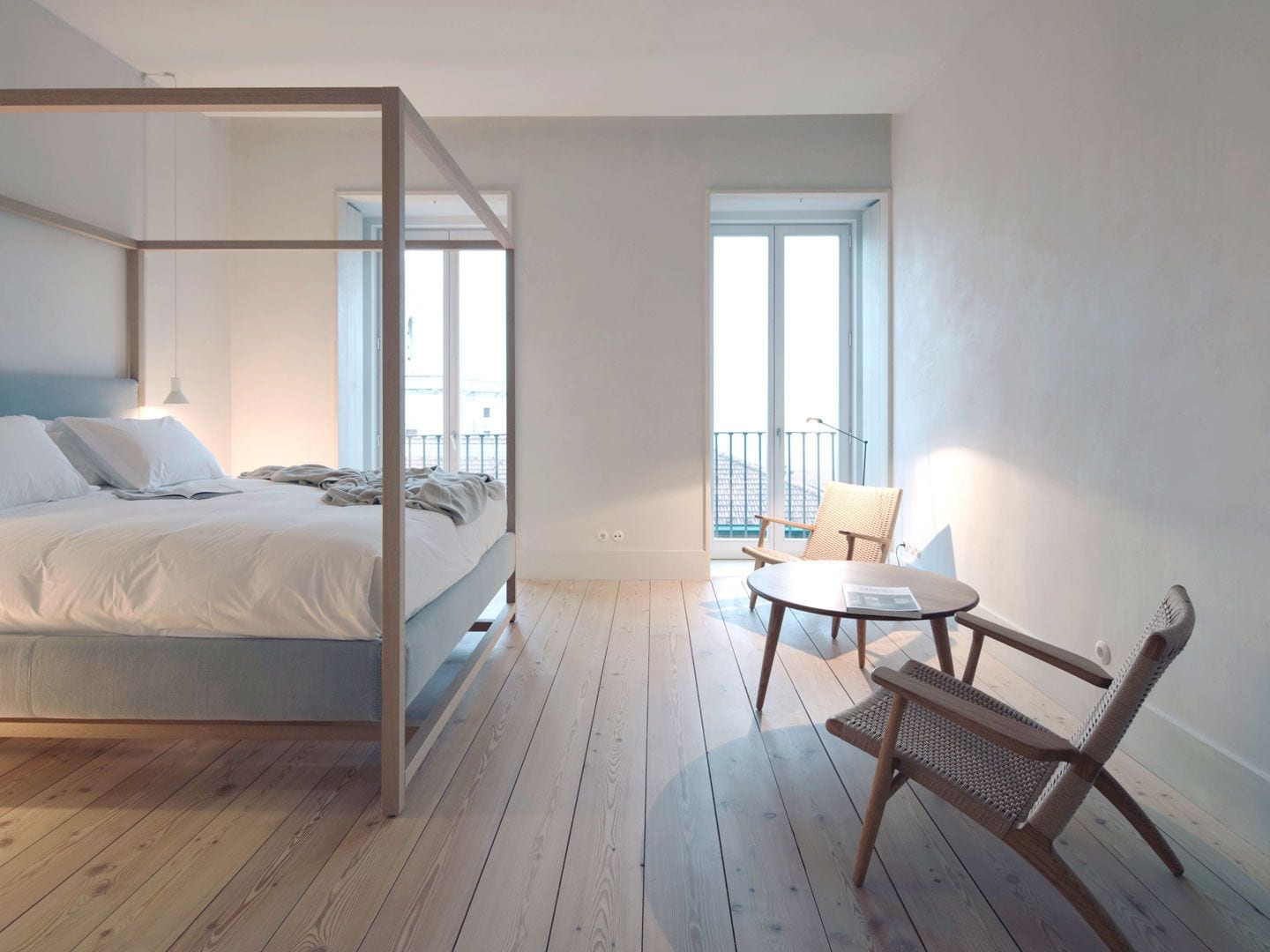This post was created in collaboration with Habitat.
When people talk about ‘less is more’ they’re probably not suggesting you sell all your prized possessions and live in an empty white box. It’s a phrase that was first used in design by the architect Ludwig Mies van der Rohe and he explained it as having ‘the greatest effect with the least means’.
1. TALIA White Bench | 2. LYSS Smoked Glass Table Lamp (no longer available) | 3. SUEDA Nude Pink Suede Cushion (no longer available) | 4. MERCO Black & White Ceramic Vase (no longer available) | 5. VIVA Glass Teapot with Infuser (no longer available) | 6. YVES Black Floor Lamp with Black Shade (no longer available) | 7. DEACON Blue Faceted Bowl (no longer available) | 8. VIVA Set of 2 Double Walled Glass Cups (no longer available) | 9. LYLE Charcoal Fabric 3 Seater Sofa
For me, it’s about buying only the things we really need and appreciate, whether that be aesthetically or functionally (or both, whenever possible); and getting rid of those we don’t. We currently live in a society in which we show our wealth with excess and I think it’s about time we took stock and realised that this nonsensical approach might not be the greatest one. It’s not only damaging to the environment but nurtures an anxiety in us to keep proving our success through larger, grander purchases. I’m not suggesting you stop working towards a better future for yourself. Just consider how you spend those well-earned pounds and pennies. Think about whether the next item you buy is going to make you happy today or for years to come. Will you still want to live with it in six months time? I’ve found that spending my money on items I really love and surrounding myself with these things makes me feel good in a way I never expected. You’ll also find that you save money, as you won’t feel the need to replace things so often because you’ll still enjoy both using and seeing them in your home.
Getting to grips with your personal tastes can be beneficial in determining what really brings you joy in your home. Go out and spend time soaking up the atmosphere and decoration in your favourite cafés, restaurants and hotels. Pick up a few interiors magazines next time you’re passing a newsstand or scour your local bookshop for interior design books, and sit with a cup of coffee and savour the pages. Pinterest boards are also an incredible way to build up a picture of what excites you. By discovering and determining the style that you love most you’ll make much better buying decisions. You’ll also find that the things you buy sit well together.
Over the last few years I’ve discovered that I’m drawn to a fairly minimalist aesthetic, functional pieces that have been made with great consideration for material and construction. They are quietly confident pieces that need no fanfare. I’m no longer distracted by what’s trending and know what suits me and my style. When I shop I look for pieces that will have a function in my home and I’ll have a spot in mind for them before I actually make a purchase. If you’re not sure, use the wish list function on your favourite website to curate a collection of items that you think might work. Then come back to them in a week or a fortnight when you’ve really given them some consideration.
It’s quite common to stop noticing the items we decorate our homes with, even the ones we spent hours debating over buying. We get them home, find the perfect place for them and then after a few months become quite used to them, to the point where we stop acknowledging them in the same way we once did. It’s not that you like them any less, they’ve just become part of the furniture (excuse the pun). Every couple of months have a rejig, move plants and prints around the house, change the books on your coffee table, try out a different configuration of your furniture. And if there are pieces in your home that you’ve completely tired of, get rid of them, either by selling them or giving them away to charity.
